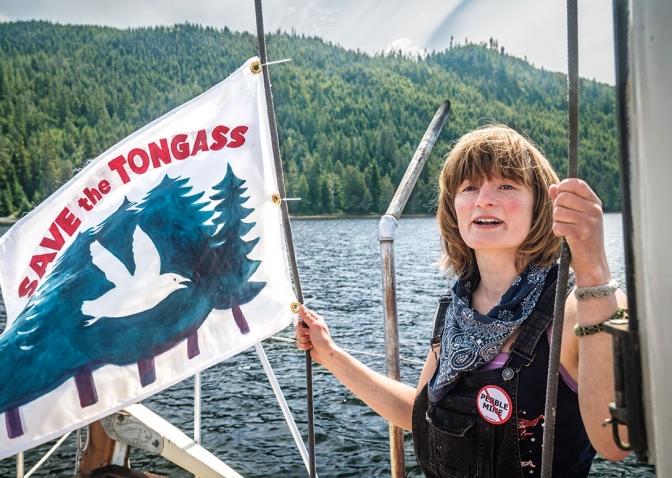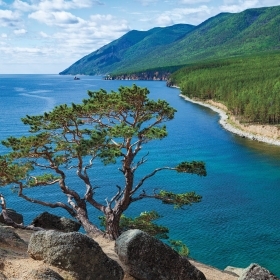Photo by Colin Arisman
Elsa Sebastian ’13 can’t remember a time when the Tongass National Forest wasn’t part of her life. Growing up in a 30-person fishing village on Prince of Wales Island in southeast Alaska, her family made a living catching salmon and turned to the forest for resources when salmon was scarce and money was tight. It wasn’t until 10-year-old Elsa saw the rest of the United States on a cross-country road trip that she began to understand just how unique the Tongass was. “As a kid, I had this idea that the whole world was as wild and intact as where I grew up, and then you go to other places and you realize that it’s actually quite special,” she says. And with that came the realization that she had a responsibility to preserve it.
After graduating from Wellesley with a degree in environmental studies, Elsa returned to Alaska to work as a conservationist and environmental activist, intent on protecting the 17-million-acre Tongass from clear-cut logging. Her motivation was twofold: Not only is the Tongass the world’s largest remaining old-growth temperate rainforest, containing millennia-old trees that cannot be replaced, but it plays an important role in stabilizing the global climate by sequestering vast quantities of carbon dioxide.
Elsa knew that people in rural places like where she grew up are wary of outside environmentalists. “I wanted to help create a movement that felt locally grown and informed by the land,” she says, “and I got curious about what this actually looks like on the ground.” She recruited a biologist and a botanical illustrator, and the trio of women hiked 150 miles across the Tongass, bushwhacking through some of the most rugged forests imaginable to explore the land and learn how it has been threatened by logging. The “storytelling project” has received a positive response from the local community, Elsa says. “I think it has changed the way people are talking about conservation in southeast Alaska.”
But Elsa wanted to do something more to protect the Tongass—something that would reach beyond southeast Alaska. She and her team decided to document their journey circumnavigating Prince of Wales by boat. The resulting film, Understory, combines breathtaking views of the Tongass with jarring shots of clear-cut logging. “I feel like it’s hard for folks to comprehend the scale of what is happening in the Tongass because it’s so far away,” Elsa says. “I wanted this film to help people feel connected to the size of this place, and also show that this is a very opportune time for our nation to choose to protect what remains of ancient, old-growth forests.” A key step, she says, is restoring the 2001 Roadless Rule, which would shield 9.4 million acres of the Tongass from logging.
Elsa also wants to maintain her own ties to the land. She spends her summers doing commercial fishing (her main source of income), most recently with an all-female crew in Bristol Bay. “To see millions of salmon returning to big rivers to spawn makes you feel like you’re living in this world that is wild and intact and full of life,” she says. Working in a local industry has also helped her advance her conservation efforts by giving her the authority to speak on these issues in the community.
Seeking an even deeper connection to the forest and the local industries, Elsa has embarked on a woodworking apprenticeship. Currently, she and her sustainability-focused mentor are working on projects that use salvaged wood, natural tree fall, and logs from second-growth forests. Ultimately, she hopes to contribute to her community as a woodworker, while also participating in local conservation movements that help people live and work on the land sustainably for multiple generations. “I’ve made the choice as an environmental activist to try to live the culture I want to see in the world,” she says.








We ask that those who engage in Wellesley magazine's online community act with honesty, integrity, and respect. (Remember the honor code, alums?) We reserve the right to remove comments by impersonators or comments that are not civil and relevant to the subject at hand. By posting here, you are permitting Wellesley magazine to edit and republish your comment in all media. Please remember that all posts are public.